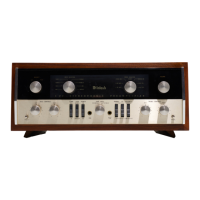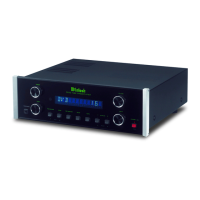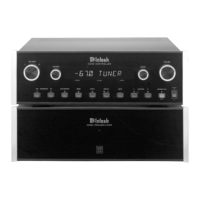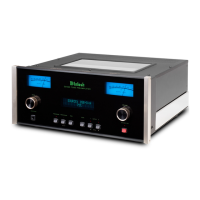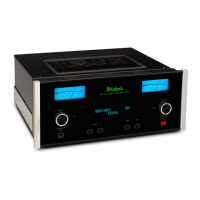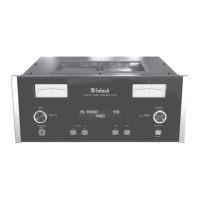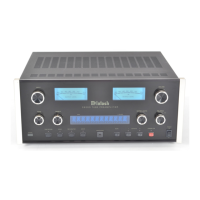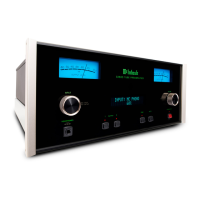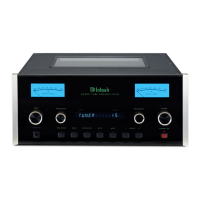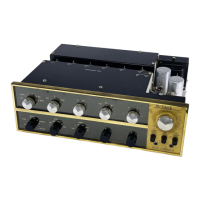What the
Controls Do
LOUDNESS CONTROL
FLAT position: (Maximum counterclockwise ro-
tation) Normal flat frequency response. The loud-
ness compensation is totally inoperative at this
position.
A loudness control provides low-frequency boost
to compensate for the behavior of the human ear
at low listening levels. The ear is less sensitive to
low frequencies at low levels. The loudness con-
trol fills in low-frequency tones that the ear would
normally hear only at higher listening levels. In-
creased loudness compensation is therefore de-
sirable as the listening level is reduced.
The C26 LOUDNESS CONTROL automatically
compensates for the lack of sensitivity in the ear as
the listening level is reduced. The low frequencies
are then heard in correct proportion to the mid-
range and highs. Turning clockwise toward MAX
position reduces the listening volume, and auto-
matically increases the compensation by boosting
bass. Use the loudness control for full frequency
range listening at even the softest listening levels.
TAPE MONITOR SWITCH
The C26 TAPE MONITOR switch makes it pos-
sible to instantaneously compare recorded material
with the source signal from either of two tape
recorders used with the C 26. The recorders used
with the C 26 should have separate record and
playback heads and separate record and play
amplifiers.
MONITOR
With the button pushed in, the signal source be-
comes the program as recorded and is fed through
the main preamplifier outputs to the power ampli-
fiers and loudspeakers.
The TAPE MONITOR switches are mechanically
interlocked to prevent simultaneous monitoring
from two tape recorders. If one button is at the IN
position, it must be pushed again to release it to
the OUT position before the other button can be
pushed.
USING ONE TAPE RECORDER
The output of a tape recorder can be connected
to either TAPE 1 or TAPE 2 input. The correspond-
ing tape output of the C 26 should then be con-
nected to the input of the tape recorder. Any
source can be recorded without being affected by
the tone control or volume control settings. The
playback of the tape recording can be monitored
by pushing the corresponding tape monitor button.
TWO TAPE RECORDERS
Two tape recorders can be used with the C 26
preamplifier. Recordings can be made from re-
corder 1 to recorder 2, or from recorder 2 to
recorder 1.
7
